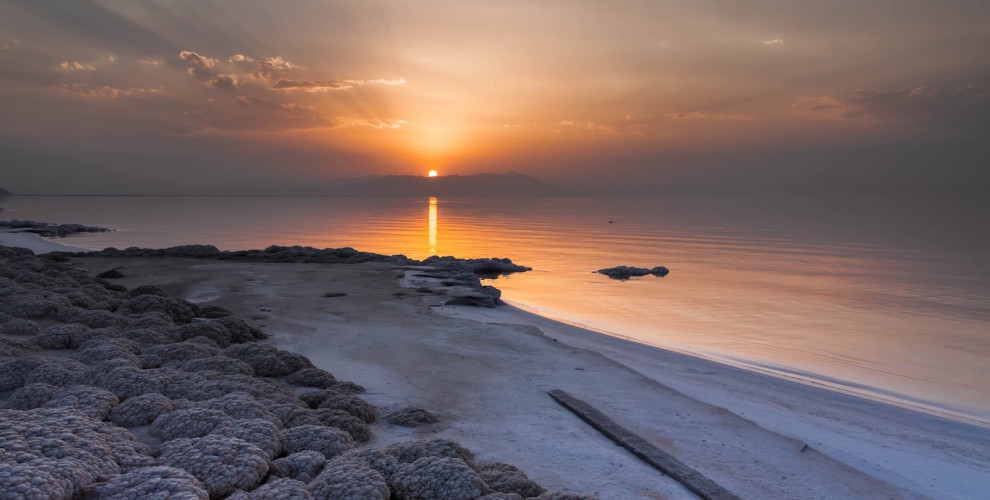Lake Urmia slowly regaining life
Lake Urmia in Iran has seen its size greatly reduced due to climate changes but also wrong human policies.
Lake Urmia in Iran has seen its size greatly reduced due to climate changes but also wrong human policies.

Lake Urmia in Eastern Kurdistan (Rojhilat) is fed by 13 rivers. With the Ramsar Convention signed in 1971 under the roof of the UN, the lake has become important at international level.
Urmia Lake, which is the haunting area of migratory birds, represents a first important biosphere reserve in this respect. Lake Urmia hosts an endemic type of Artemia and a submarine flora.
Urmia Lake, once known as one of the largest lakes in the Middle East and one of the largest salt lakes in the world, is situated in an area among the top ten cities in Iran, between Urmia and Tabriz, with more than 6 million people living in it of agriculture.
Lake Urmia began to dry rapidly since 1996. According to the UN Environment Program (PNUE), in August 2011 the surface of the lake fell to 2,366 square kilometres and in 2013 the surface of the lake was measured as just 700 square kilometres.
Iranian President Hassan Rouhani said during a visit to the region: “One of my promises was the rebirth of Lake Urmia. This promise is still valid.”
PNUE said in November 2017 that “recent signs indicate that the lake is growing in size once again. The surface is now 2,300 square kilometres.”
According to the latest data from the Ministry of Environment, the surface covered with water at the beginning of December was 1,844 km.
The difference between the data of the PNUE and that of the Ministry of the Environment is explained by the periodic changes associated with precipitation and water evaporation.
“This is the beginning of the rebirth of the lake”, said Ebulfazl Abeht, responsible for the program for the protection of moist areas in the Ministry of Environment.
Speaking to AFP at the opening of a program of awareness for the public in the city of Miyanduav to the south of the lake, Abeht said that the lake is undergoing a recovery and added that the tendency to dryness had stopped. However, according to Abeht, it may take decades for the lake to regain its size.
According to Tehran and the UN, the shrinkage of the lake is due to the increase in population and the use of water resources in favor of agriculture.
But opposition sources blame state policies for it. Environmentalists think the dams have caused the region to dry out. The Iranian regime made more than 40 dams over the rivers carrying water to the lake.
In his October statement, Environment Minister Isa Kalantari drew attention to the dams around the lake to irrigate agricultural land, saying: “We almost had the share of streams flowing into the lake.”
According to researches, climate changes aggravated the situation. The long-term decline in the region and the increase in air temperatures are among the climate changes held responsible for this decline.
Also, the construction of a bridge over the lake is seen as a factor that may have accelerated the disaster. The bridge, which was completed in 2008, shortens the distance between Urmia and Tabriz, but according to PNUE, this bridge divides the lake into two.
The ecological disaster in the lake also has consequences for the health of the people of the region. During storms, dust and salt lying on the dry surface of the lake spread to the environment. This destroys plants and pollutes the air.
In March, Jonathan Bet Kolia, who was in charge of the parliament's environmental issues, said that the situation in the country was critical.
According to the statement he posted on the Assembly site, Jonathan Bet Kolia said: “Many water resources, including Lake Urmia and Zayendeh Rud, have dried up and are threatened with extinction. If the lake is completely dry and destroyed, about 14 states will disappear.”